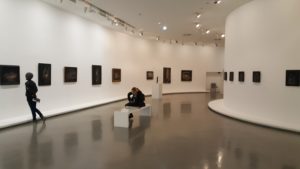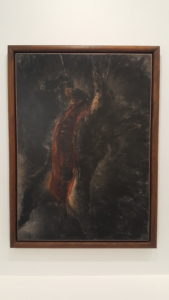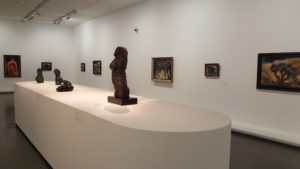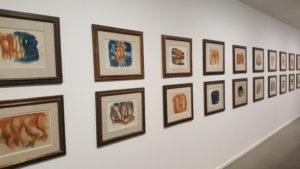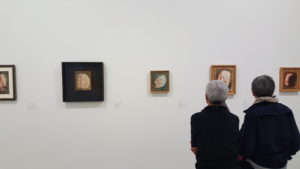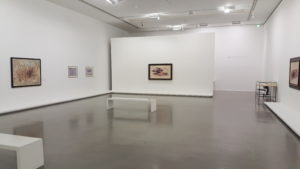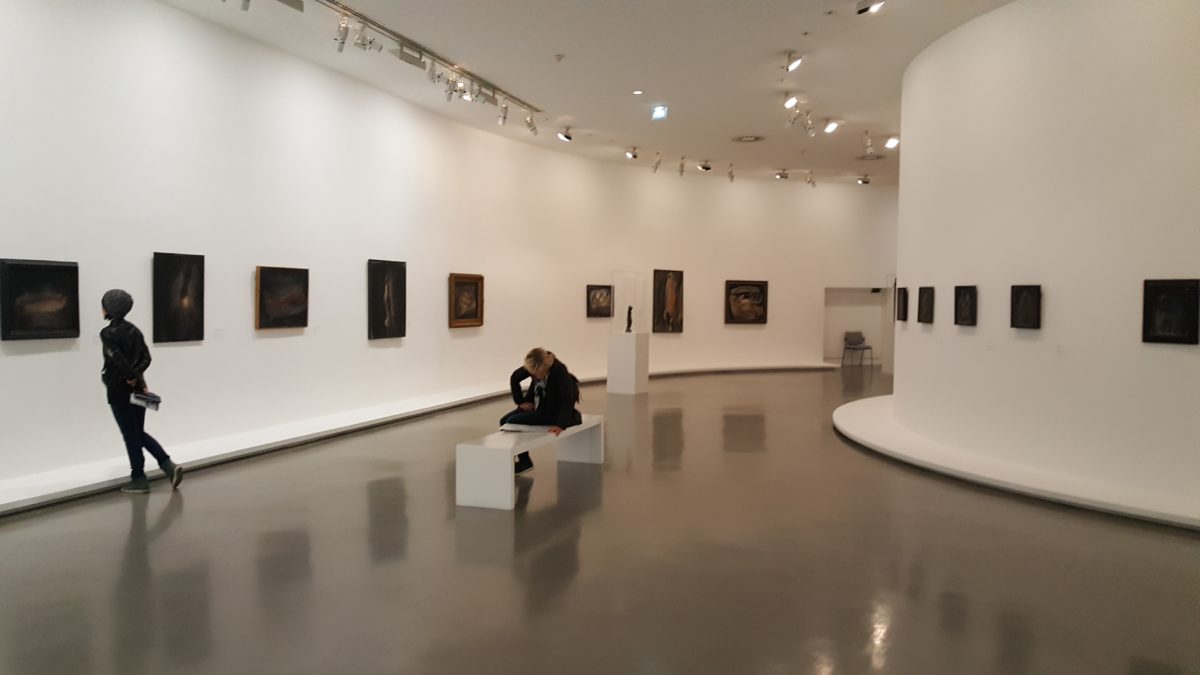Jean Fautrier: Matière et lumière – Musée d’Art moderne de la Ville de Paris // LAST CHANCE TO SEE
During a recent and brief trip to Paris, I took in two exhibitions on artists I was not at all familiar with. The first was on František Kupka, and the second, at the Musée d’Art Moderne de la Ville de Paris, was a retrospective of the work of Jean Fautrier. Whereas, if you go to a Modigliani exhibition, say, you know more or less what you will see and that it will be a big blockbuster with the inevitable crowds, an exhibition of a lesser-known artist has the benefit of feeling like a discovery, as well as being less on the ‘to do’ list of the multitude and therefore providing wide open gallery spaces to contemplate the artist’s works. What a perfect way to feed a culture vulture’s artistic soul!
So, Jean Fautrier. Born in 1898 to an unwed mother, he spent his early years in France before going to join said mother in England at the age of about 10. He studied at the Royal Academy and the Slade School, before being called up by the French army in 1917. He began exhibiting paintings in 1922, spent some time as a ski instructor in the 1930s, witnessed Nazi executions during WWII and died in 1964. Fautrier and the Musée d’Art Moderne are very much interlinked, MAM having mounted his first retrospective in 1964 in response to a large-scale donation of the artist’s works, as well as a subsequent one in 1989. It’s almost like a one-museum crusade to assure Fautrier a place in the artistic canon, but is it justified?
My feeling, having seen the approximately 200 works on display here, is yes. Taking artistic inspiration from various sources (Turner, the impressionists, etc.), Fautrier’s own works moved through distinctive phases, from early figurative beginnings through a series of dark works recalling Goya, through ‘art informel’, with a few sculptures thrown in for good measure. The works for which he is most famous are thick impastos, particularly the Otages (hostages) series, recalling his experiences during the Second World War and combining figurative and abstract elements to create works which speak to both the humanity and the anonymity of these victims. They are powerful and thought-provoking: whereas Kupka’s journey to abstraction saw him reducing objects to their constituent shapes, Fautrier’s abstractions feel more emotionally engaged than academic.
Fautrier seems to have been intensely private, and one of the most interesting parts of the exhibition for me were the archival interviews: one which I saw was a fairly staged reportage, and the other the artist in conversation. Whenever Fautrier was on screen he chain smoked, rejected labels assigned to him, and refused to be drawn on his artistic process. If he had a studio, it seems to have been a contemporary mystery, and as a result all we have to judge him on are the works themselves. Does this make it more difficult to assign a place in art history? Perhaps: he’s certainly no Picasso leaving behind endless testaments to his creative process, or a Francis Bacon whose entire studio has been musealised. It may be that it takes a stubborn effort by a determined museum to keep such an artist in the public memory by repeating a retrospective for each generation.
With a week to go in the run, I would encourage those in Paris to go and acquaint themselves with Fautrier. Some images are below to tempt you: I can definitely recommend a quiet Saturday morning as the optimum time to go, the luxury of having a museum almost to oneself is a pleasurable one, and Fautrier’s works lend themselves to an unhurried contemplation.
Until 20 May


